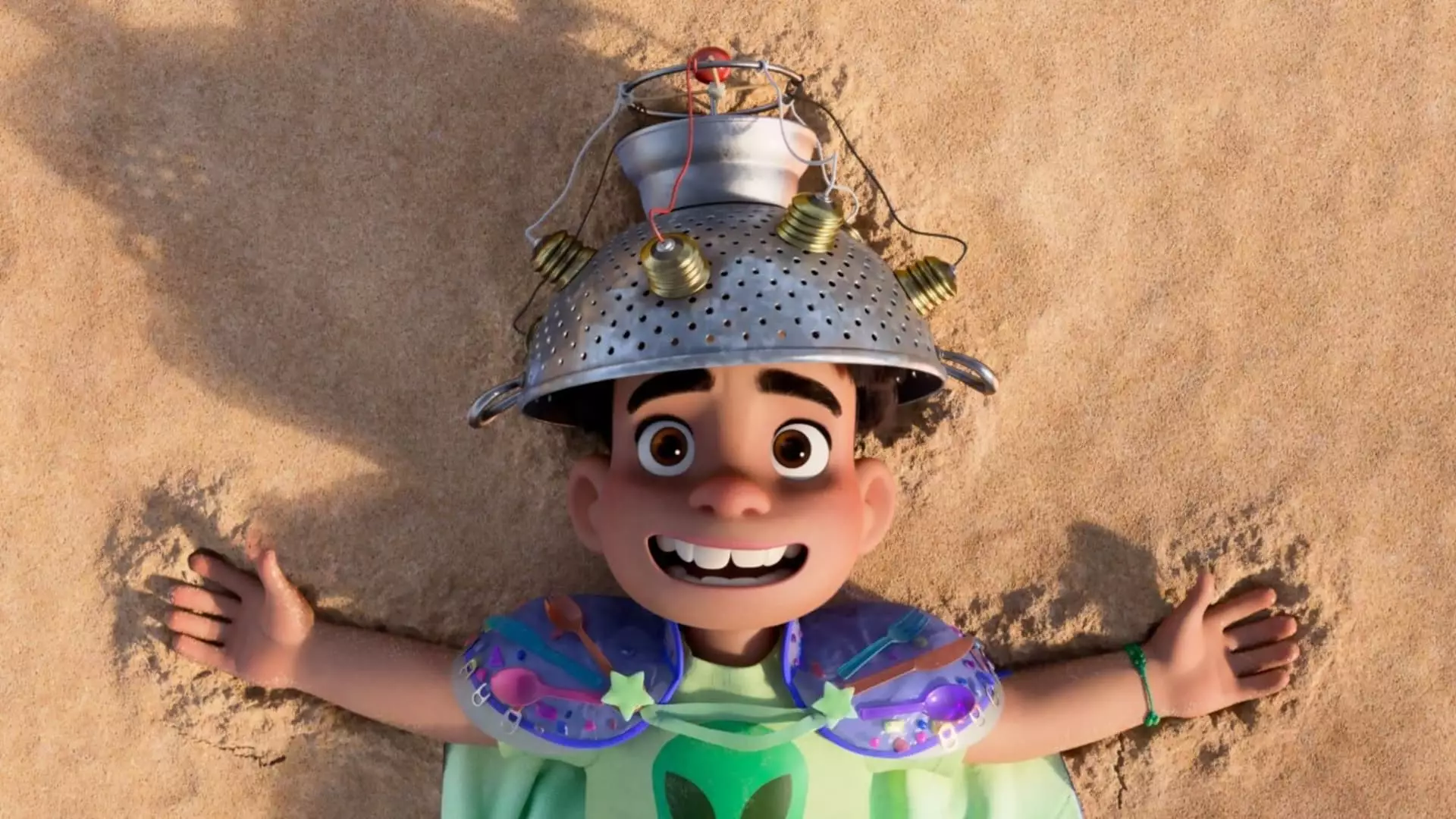Pixar’s animated film “Elio” has set an unwanted record, marking the studio’s worst opening ever at the box office. With a meager $21 million in ticket sales during its debut weekend, the film has not only highlighted the struggles that Pixar faces but has also underscored a larger trend affecting the animation industry. The failure of “Elio” doesn’t exist in isolation; it reflects critical issues that both Pixar and the broader animation landscape are grappling with in the aftermath of the pandemic.
In a world where franchises reign supreme, Pixar’s original offerings are suffering a lack of consumer interest. With 2023’s “Elemental” previously holding the studio’s record for lowest opening at $29.6 million and a stark contrast to the success of “Inside Out 2,” which grossed a staggering $154.2 million, the metrics are telling. In times gone by, we would expect fresh storytelling from a titan like Pixar to excite audiences. Instead, we see a pattern where nostalgia and familiar characters dominate the narrative.
Franchise versus Original: A Disheartening Trend for Creators
The film industry is in an unprecedented state, where original animated stories are finding it increasingly challenging to compete with sequels and adaptations. Major studios—Disney, Warner Bros., Universal, and others—are inundating the market with franchise films, relying on existing intellectual properties to secure box office returns. “Elio,” like many original films that have been released recently, is perilously close to being forgotten in a sea of established characters.
While the allure of sequels and spin-offs is easily understandable, it puts individuals behind creative desks in a tough spot, leading them to play it safe rather than take risks on original narratives. Doug Creutz, an analyst at TD Cowen, highlights this alarming trend, noting how the gap between original and franchise film performance has widened significantly since the pandemic. The natural consumer tendency toward familiarity seems to create an insatiable demand for sequels, further marginalizing unique stories—stories that are the very lifeblood of creativity in filmmaking.
Saturated Market and Changing Habits of Moviegoers
The landscape of cinema is changing rapidly, particularly after the disruptions caused by the global pandemic. Families are now more discerning about what they choose to watch, compounded by an increasingly crowded marketplace of animated features. The result? A shift in what gets funded, produced, and ultimately released.
Moreover, when “Elio” surfaced in theaters on June 20, it found itself battling the competition from other studios’ animated offerings, namely Disney’s own “Lilo & Stitch” and Universal’s “How to Train Your Dragon.” These films are not just echoes of the past; they are properties with established fan bases, and that familiarity creates a formidable barrier for newcomers struggling to break through.
More alarming is the tendency for studios to forego originality in favor of recycled narratives, leading to an oversaturation of content that invariably dilutes the charm and impact of animated storytelling. Viewers are inspired to engage with franchises they know and love, while original content increasingly finds itself on the chopping block.
The Rise of Streaming and Its Discontents
The rise of streaming services and the shift in consumption habits have immensely contributed to changing industry dynamics. Following the pandemic, Disney opted to release films like “Soul,” “Luca,” and “Turning Red” directly onto its platform, Disney+, effectively bypassing theatrical releases. While this strategy serves immediate financial needs, it blindsides the long-term growth of original properties in theaters.
This new paradigm shift not only affects box office performance but alters consumer preferences. Parents have discovered they can keep their children entertained at home, which casts a long shadow over cinema attendance. This phenomenon has made audiences pickier than ever, yielding a market ripe for franchise dominance while the innovative yet unfamiliar plots struggle to gain footing.
The Consequences of Social Consciousness in Storytelling
While Pixar has always been at the forefront of pushing boundaries in storytelling, its overtly social consciousness can alienate certain segments of potential audiences. Some viewers feel that contemporary narratives are marred by agendas rather than storytelling purity.
In an era where studios need to ensure they appeal to broad demographics, the challenge lies in balancing social philosophies with engaging story arcs that connect with a wide audience. Creative ventures like “Elio,” which may have contained substantial themes, might inadvertently turn off audiences seeking a more light-hearted escapism—a crucial element in animation.
The Future of Original Animation: Hope or Despair?
Nothing is entirely lost for original animated films like “Elio.” Films can experience remarkable second winds, thriving in home markets long after their theatrical run. History has shown that audience appreciation often grows post-release, as evidenced with the path “Encanto” took. Still, the view for original content remains bleak and daunting.
As audiences become wedded to the comfort of sequels, fresh tales risk fading into obscurity—a phenomenon that requires not only a recalibration of storytelling but a serious reconsideration from studios about the future of creativity in animation. The industry stands at a crucial intersection. Rethinking strategies could involve revitalizing original narratives that capture hearts while maintaining the entertaining spirit that animation is known for. Time will tell if the tides can turn back toward unique storytelling that champions creativity as much as familiarity.

